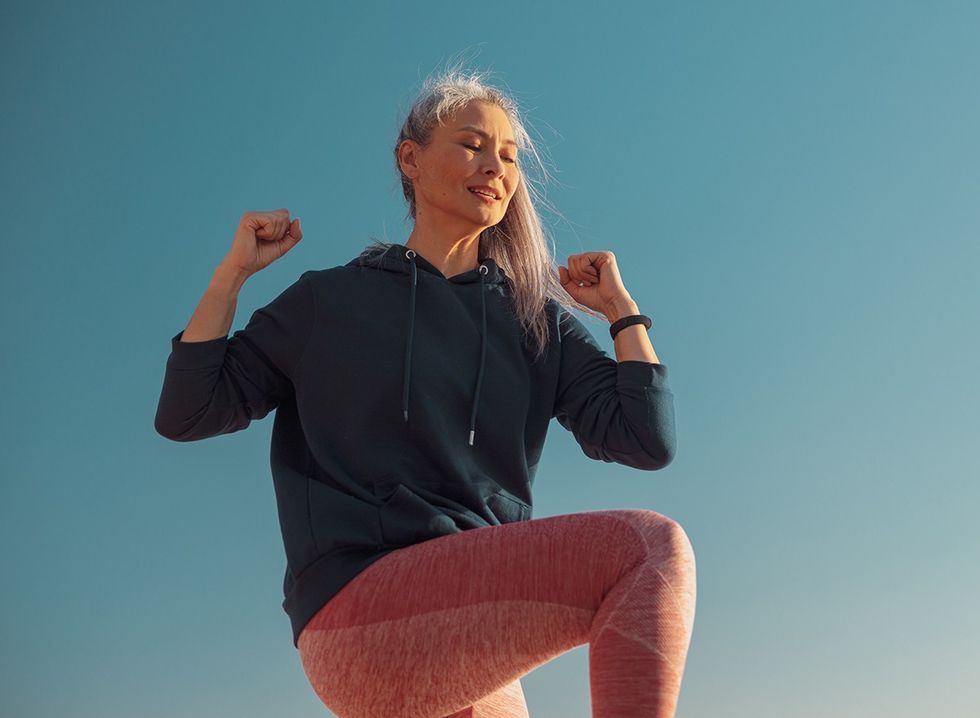The ability to lift your knees is a sign of flexibility and, in the case of doing the high knees exercise/training drill, a sign of good cardiovascular health. The ability to lift your knees to a 45 degree angle is one sign of strong, healthy, hips. Knees are supported by the hamstring and quadricep muscles, which also support hip health. “Strength in the muscles around a damaged knee or hip can help support that joint by taking over some of its responsibilities,” says Harvard Health. “For example, your hips have to do less work to support your body weight if your quadriceps, gluteals, hamstrings, and abdominal muscles are stronger.”
RELATED: Top 5 Exercises to Improve Your Flexibility.
Why is hip health so important? Our hips carry our entire body weight and more, and need to be kept strong for overall wellness and healthy aging. “The hip joint is a ball-and-socket joint with more than 33 muscles that allow it to function,” says Jordan Smith, MD, a hip orthopedic surgeon with Banner University Medicine. “The hips handle tremendous forces that actually exceed our body weight. Despite this, they can have a wide range of motion and, with a little luck, last a lifetime.”
If you experience hip pain, see a specialist without delay. “The single most important thing for people with hip pain is not to ignore it,” orthopedic surgeon and sports medicine specialist Michael B. Banffy, MD, tells Cedars-Sinai. “The hip joint is a resilient joint. Unfortunately, I often have patients in their 30s show up with significant arthritic damage they might have avoided if they had visited an orthopedic specialist when they were younger. I always encourage people to get evaluated by a specialist, who can assess how severe any damage might be. Then we can make a plan to prevent further deterioration.”
Regular exercise is one of the most effective ways of keeping the muscles around hips strong and flexible. Dr. Smith recommends exercises and stretches that target the hip flexors, hamstrings, glutes, and core strength. “Yoga, tai chi, Pilates and any bodyweight, ground-based calisthenics program will have this as an essential part of the activity,” he says.
Healthy hips can also help seniors avoid falls and fractures, which is another reason to keep them in good shape. “Strengthening or resistance exercises, such as using weight machines, swimming or walking on hills or climbing stairs, can make the muscles and tendons of your hip area stronger,” says Allston Julius Stubbs IV, MD, via Atrium Health Wake Forest Baptist.
Working on knee lifts can help strengthen hips, experts say. “Knee lifts stretch your hip flexors, thigh muscles, and gluteal muscles,” says orthopedic surgeon Christopher R. Boone, MD. “To do knee lifts, lie flat on your back with your legs outstretched. Bring your right knee to your chest, and keep your left knee pressed against the floor, holding the position for 30 seconds. Repeat on the other side. You’ll feel a stretch in your hip with each knee lift. Do two to three sets on each side.”
Sources referenced in this article

